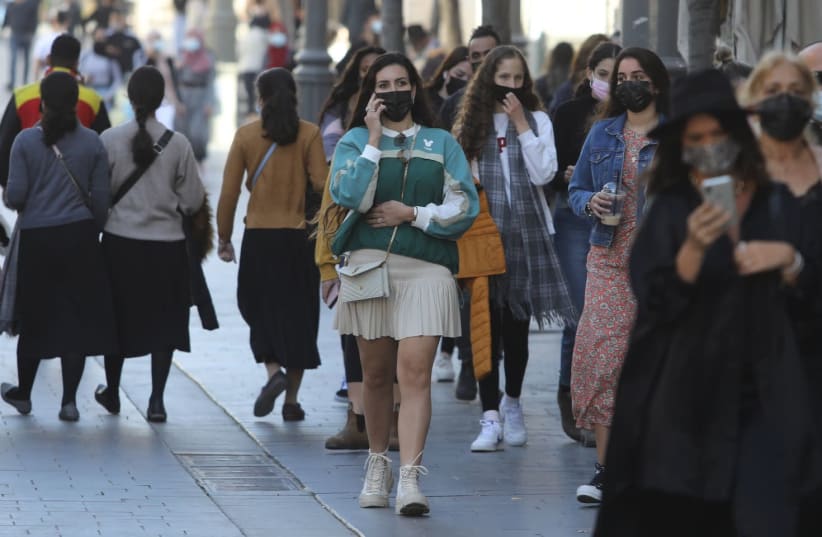The reproduction rate – also known as the “R” – spiked to 1.01 on May 15, although by Monday it was back down to 0.76.
The reproduction rate is the number of people each sick person infects. Throughout the COVID-19 crisis, health officials said it must be less than one to ensure that the virus did not spread, and ideally no more than 0.8.
So why is no one talking about it?
There are two reasons for the R not being relevant at this point in time, Tomer Lotan, executive director at the National Coronavirus Task Force, told The Jerusalem Post.
The first is that the country has very few cases of the virus. Israel has had an average of 30 new cases per day for the past month.
“When you have such tiny numbers, any little change – 20 to 25 or from 25 to 30 – when you look at the percentage of change it is considered to be large,” Lotan explained. “Whereas basically these are very tiny numbers.”
For example, if there is an outbreak in a school and five or six students are diagnosed, it could increase the weekly average from 20 to 23 and the R would jump, but the change would ultimately be insignificant.
“The R is jumping up and down easily these days,” Lotan said.
Another reason for the fluctuation in the R is the testing rate.
During the 11-day security escalation that began on May 10, many fewer people were screened for the virus, which impacted the number of daily cases. Fewer people wanted to go out to get tested and there were also fewer people flying, which meant less required tests of people traveling into and outside the country.
The Shavuot holiday further reduced the number of people screened.
In total, Lotan said, only a few thousand were tested each day of the escalation, when on average around 25,000 to 30,000 people are screened per day.
When people started to get tested again, the R went up.
He added that the Health Ministry expects the number of daily tests to drop again by the end of the week as the green pass rules that require non-vaccinated individuals to be tested before entering certain establishments go away on June 1.
“In order to see a consistent R, you have to see consistent testing,” Lotan said.
Israel will continue to have COVID-19 cases, Prof. Cyrille Cohen of Bar-Ilan University explained.
“I think it is still circulating, but we are not seeing it because most of the people who are not vaccinated are young people, of which large portions are asymptomatic and they don’t get tested if they are asymptomatic,” he said. “And if they bring it home, their families don’t catch it – because they are vaccinated.”
He said, “We might be missing cases, but I don’t care because there is no clinical impact. If two weeks in a row we see a rise, then we should start to become concerned.”
